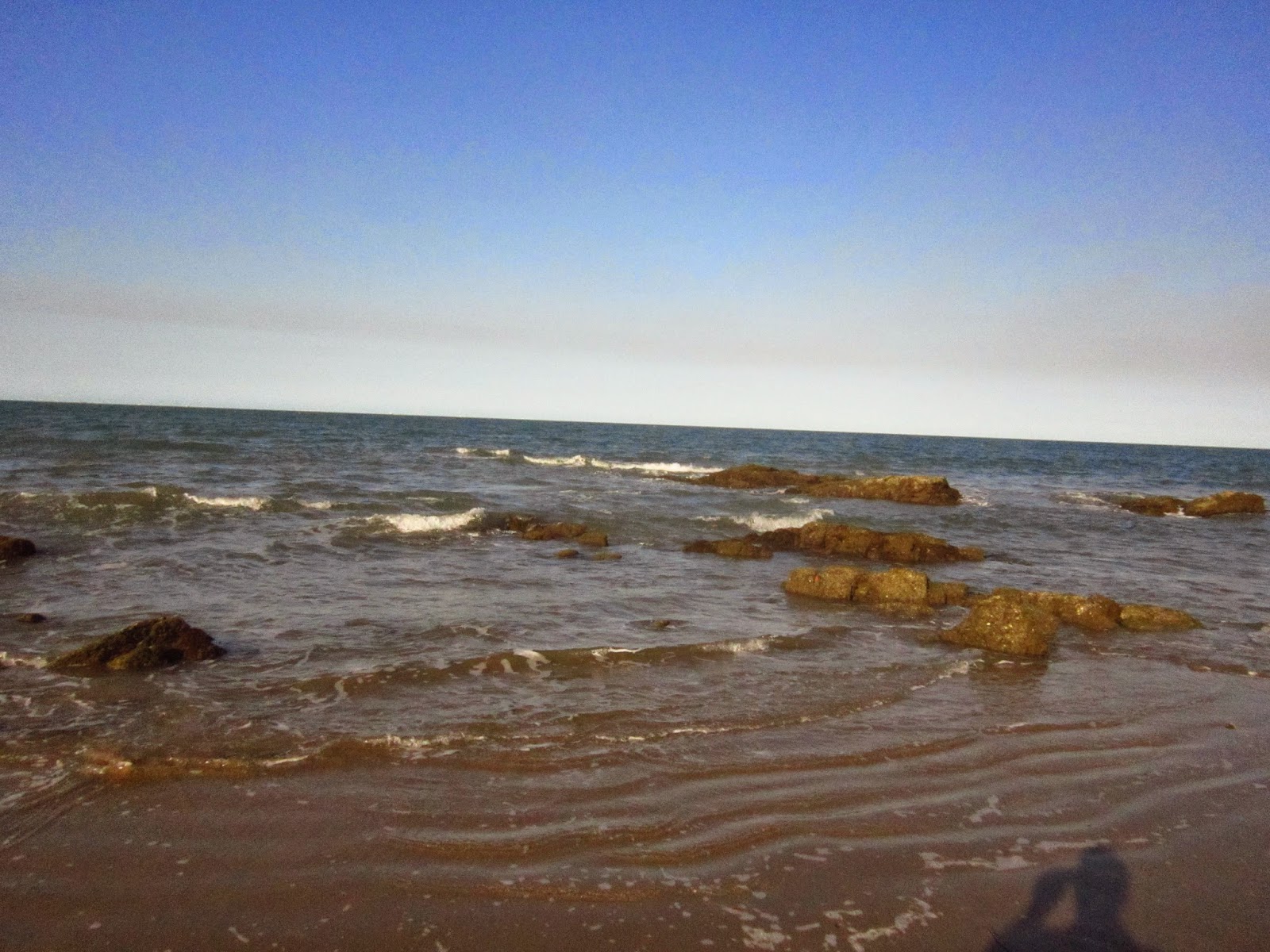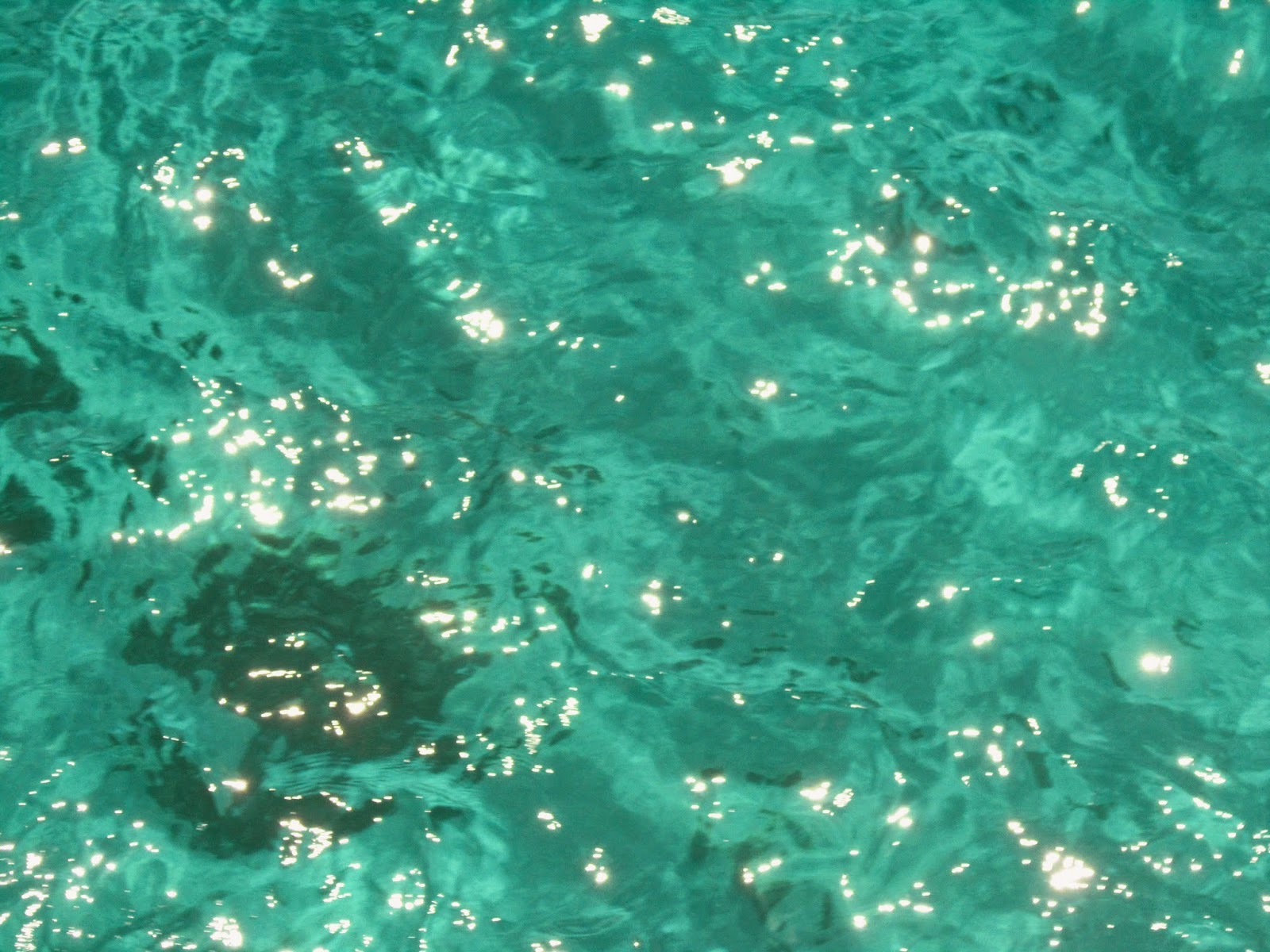After leaving Carnarvon, we drove 8 hours to Gladstone on the coast. We dropped Dr. John, Toby, and Sheree at the airport and then drove to a place called Tannum Sands. Our accommodation for the evening was in an old Anglican work camp. Dave, the caretaker, told me about its origins housing the builders who constructed the aluminum and bauxite mills/refineries in Gladstone. However, the place had the look of an old leper colony, or perhaps a minimal security psychiatric hospital. We did expect to see people in robes shuffling around on the grass or sitting at a table playing Connect 4. My bed was even bolted to the wall!
Tibbetts joined us for a walk on the beach, and it was nice to see the ocean, even if the land-use in Gladstone is quite disgustingly destroying some of the surrounding ecosystems (and that is not really too far off of what just about everyone else does anyways).
 |
| The babes of marine biology: Corinne and Mia |
The next morning, we bussed down to the ferry terminal. In the gift shop, they were selling a polo shirt decorated with the distinctive 3 smokestacks of the bauxite mill. I can only imagine what mad politician or tourist board thought this was a great draw.
 |
| The initial view from the ferry |
 |
| Never has litter in the water seemed so cheery. |
 |
| Bianca always gives good face. |
 |
| Leah looking dreamy on the ferry |
After the two-hour ferry ride we arrived at Heron Island. I should mention that I did not take a ton of pictures of the main attraction: the Great Barrier Reef. My camera is not waterproof, and I did not get to the front of the queue to check out the research station's cache of cameras. Additionally, we were kept busy either conceiving and executing our research projects or being sent out into the water to explore the surroundings more.
My arrival was a bit difficult for me as well. I had the beginnings of an intense sinus infection. I also had been quite sleep-deprived, turning me into a raging princess. Following that, I checked out a mask and snorkel, only to find on the first outing that a tear in the connections made the snorkel more of a straw. I exchanged the snorkel for our second outing, only to have the clip on my mask break. I exchanged both, and found that the replacement mask would not stop fogging or flooding. During a lab, I got the one microscope with a defective lightbulb. I really felt cursed, while trying to manage the pressure of our research. Therefore, I was a couple snorkels behind everyone else in observing the reef and enjoying the surroundings.
On the north side, there is a resort. On the south side, the Heron
Island Research Station (HIRS). The east end of the island is all
national park.
 |
| Nothing like being greeted to the island by some boobies! |
 |
| The research station at dusk |
 |
| The gear rack |
 |
| Wetsuit heaven. |
I had the pleasure of teaming up with Ryan, Shira, Corinne, and Alissa for our research project. While snorkelling in the inner reef flats, we noticed an interesting phenomenon. When you stir the sediment, a variety of different fish flocked to the disturbance to feed on whatever got kicked up. This is called disturbance attendant feeding, and it is something that has not been extensively studied (it was shocking to discover how many things there are that have not been researched). Many such fish follow tuskfish or rays and take advantage of the movement these others create.
Therefore, we hypothesized that a larger disturbance would attract greater numbers and species of fish. Despite my initial petulant desire to stay in the lab, I have to admit that it was nice to spend my work-days snorkeling in the reef flats called the moat along the south side of the island. We devised some controlled disturbances. One of us would swim down and create the disturbance while two others hovered above to count the fish.
 |
| Shira, Corinne, and Ryan writing out our slates for data collection. |
 |
| The data slate |
We found that more fish do come to the disturbances. The number of species was quite limited. We compiled our data after each snorkel, ran some statistics (the magic of the two- and three-way ANOVAs and Tukey HSD post-hoc tests...), and then got down to work writing up our final papers for our final assessment. In addition, we were sent by the Tibnado at random times for boat and shore snorkels and other outings. Our tutors Renee and Francisco were a marvellous help.
 |
| The dormitory area |
 |
| Oral hygiene on the island. |
The island is a tiny yet interesting little ecosystem, dominated by Pisonia trees. These trees are dispersed by birds, fertilized by birds, etc. Flocks and flocks of noddy terns dominate the trees in their shoddy nests made of guano and dead leaves. These birds did not mind people, and would often buzz past us in their hunt for nesting materials. This tight cycling meant very little of the islands foliage washed into the waters. At night, the sheerwaters would return to the island and their burrows under the trees. They all moan and squawk and cry throughout the night, making for a spooky sensation.
 |
| The noddy tern |
 |
| Students in science. |
 |
| The wreck at the opening of the channel carved in for the harbor. |
 |
| This is where I walked to start my research every day: how awful! |
 |
| Erin |
 |
| Mia |
 |
| Corinne by the late afternoon sun |
 |
| sitting in the afternoon before the late snorkel |
 |
| A chiton |
 |
| small land crab |
 |
| tern |
A word about food. Rails and gulls were constantly hovering outside the kitchen. There were picnic tables where most people sat, trying to fend off the birds. These birds would get quite bold, approaching and stealing food out of people's hands and off their plates. It could be entertaining. However, I felt like enjoying my meals. Patrick and John, the cooks at HIRS, made amazing meals. It was downright gourmet. Rather than trying to sit at a picnic table and fight off birds, I would slink into the back dining room, that often went unnoticed by others, for a quiet meal.
 |
| The back dining room. |
 |
| Corinne gets her sunscreen on for a snorkel. |
 |
| Much to my disappointment, this is not called a Heron Island Heron. |
 |
| The beach rock (limestone) along the moat where we conducted our research. |
 |
| A baby shovel-nosed ray. |
The end of the moat was a sand flat called Shark Bay. It was heavily populated with a variety of rays (eagle, whip-tail, shovel-nosed, and even porcupine) and sharks (mostly black-tip reef and lemon sharks). You could come across 40 rays laying in the sand. It was amazing.
On the last day, Jonathan and I went for a walk around the island (cutting through the resort). We then went for an amazing snorkel. We came across a young sea turtle, followed eagle rays with remora, sat circled by a bunch of black-tip reef sharks, and even had a close encounter with the highly venomous yet incredibly beautiful blue-ring octopus. I found a bottle on the seafloor, and took it to Jonathan, thinking "hey, message in a bottle." Then, the end of the bottle started pulsing and a tentacle unfurled. Then, bright blue rings (the animal kingdom shorthand for "DO NOT TOUCH") began to flash. We rapidly let go of the bottle while the little cephalopod swam away. Ultimately, we helped some visiting researchers track down and study some very rare porcupine rays. It was one squee!-worthy moment after another. We then went for a sunset snorkel in the bay, watching the sea turtles get nestled into the seagrass where they sleep for the night.
 |
| Jonathan |
 |
| Tracks from sea turtles checking out the beach in preparation for mating. |
 |
| Tibbets! |
Here are some additional photos I managed to get my hands on.
These taken by Shira...
 |
| Ryan, a huge fan of cephalopods, nearly shat himself when I told him about the blue-ring octopus |
 |
| Give us a little cleavage! |
Ryan and I also managed to get our hands on one of the underwater cameras for our final boat snorkel. Despite my sinu infection, I did one head-crushing free dive so I could have a picture of me with a coral reef backdrop. That day, the sea was teaming with ctenophores (comb jellies).
 |
| Spider man! |
Following our research presentations on the last morning, we went down to catch the ferry. We filled the wait time with group photos, tomfoolery, and general milling about.
 |
| Annie and Ian |
 |
| Anna |
 |
| Laurel |
 |
| Jacqui, Leah, Tyler, Bianca, Rodney, Jenn, and Ian |
 |
| I caught Kim right at the moment someone told her we were not taking a photo...yay |
 |
| Tyler |
 |
| Bianca |
 |
| Jacqui and Leah |
 |
| Laurel photobombs Ian, Kimberly, and Jonathan |
 |
| Rodney |
 |
| Shira |
 |
| Daniella |
 |
| Max |
The weather on the last day had turned stormy, which made for a choppy and unpleasant ferry ride back to the mainland. Following, that, we got on the bus for an 8 hour ride back to Brisbane. Due to my propensity for motion sickness, I could not work on my paper. Fortunately, the bus had a video screen and some DVDs. I was finally able to inflict The Castle on my classmates. They finally understood my constant quoting of it.
We got back to Brisbane late on Monday night.































































































No comments:
Post a Comment